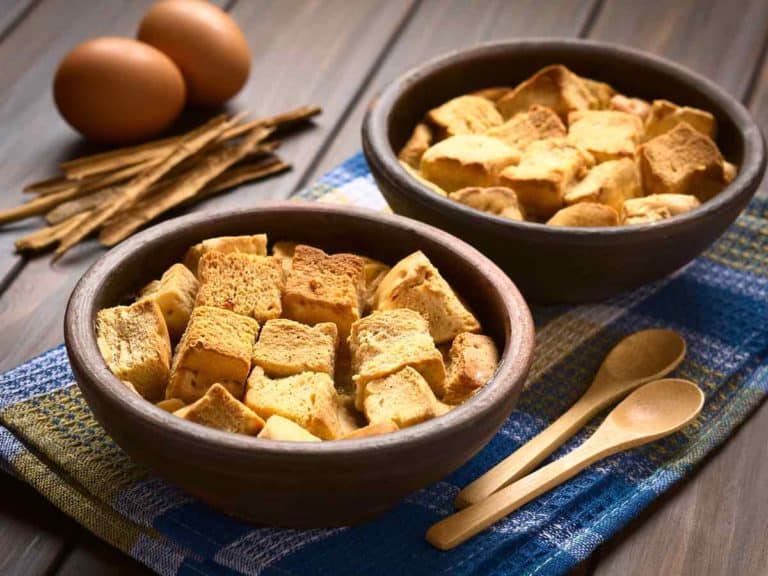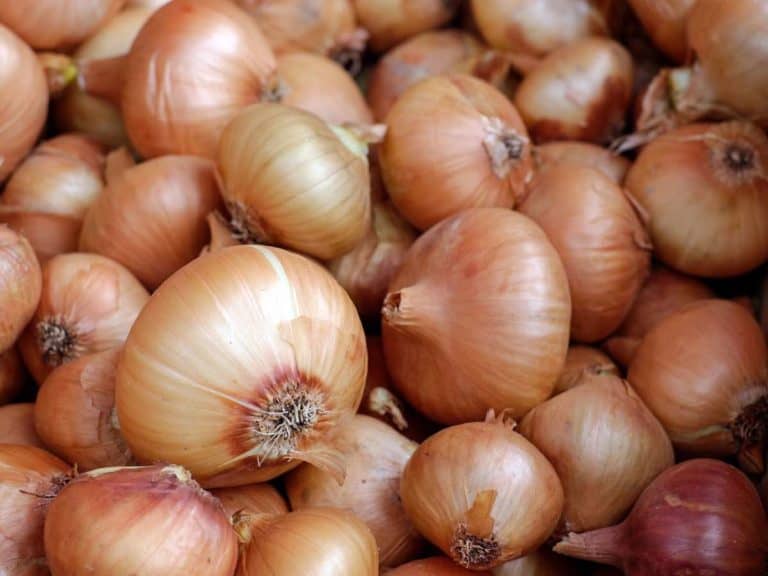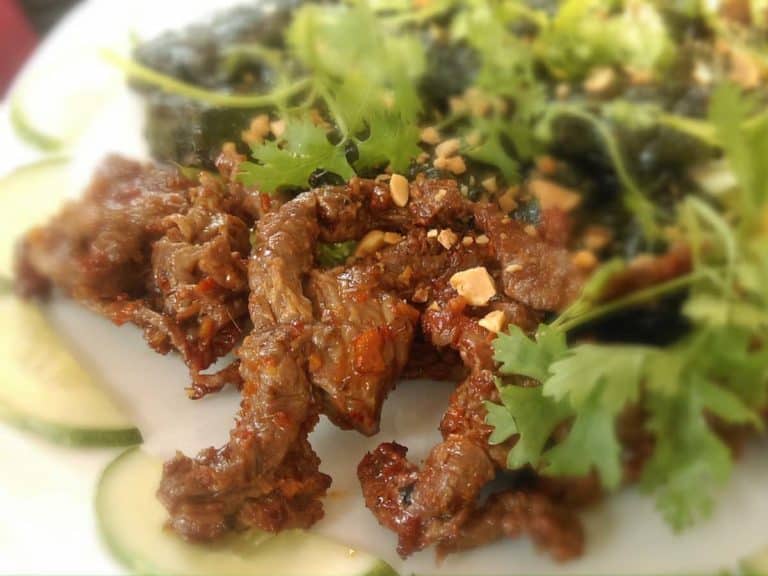How To Keep Sweet Potatoes Fresh: Step by Step Instructions
Have you ever had a bunch of sweet potatoes, especially the white ones, turn brown at home? It can be dismaying. Sometimes they start turning brown after you peel them. Here’s how to keep white sweet potatoes from turning brown.
Keep raw sweet potatoes in a cool, dry, well-ventilated place. If you have already cut your sweet potatoes, submerge them in water. Then keep them in the refrigerator for up to 24 hours. You can freeze sweet potatoes after cooking or blanching them. Frozen sweet potatoes keep for 12 months.
Sweet potatoes, whatever color they may be, are a great root crop that is versatile in cooking. If you store sweet potatoes well, they can last a long time, so you don’t have to buy them just as you’ll cook them. Here you’ll learn how to keep any sweet potato, not just white, from turning brown.
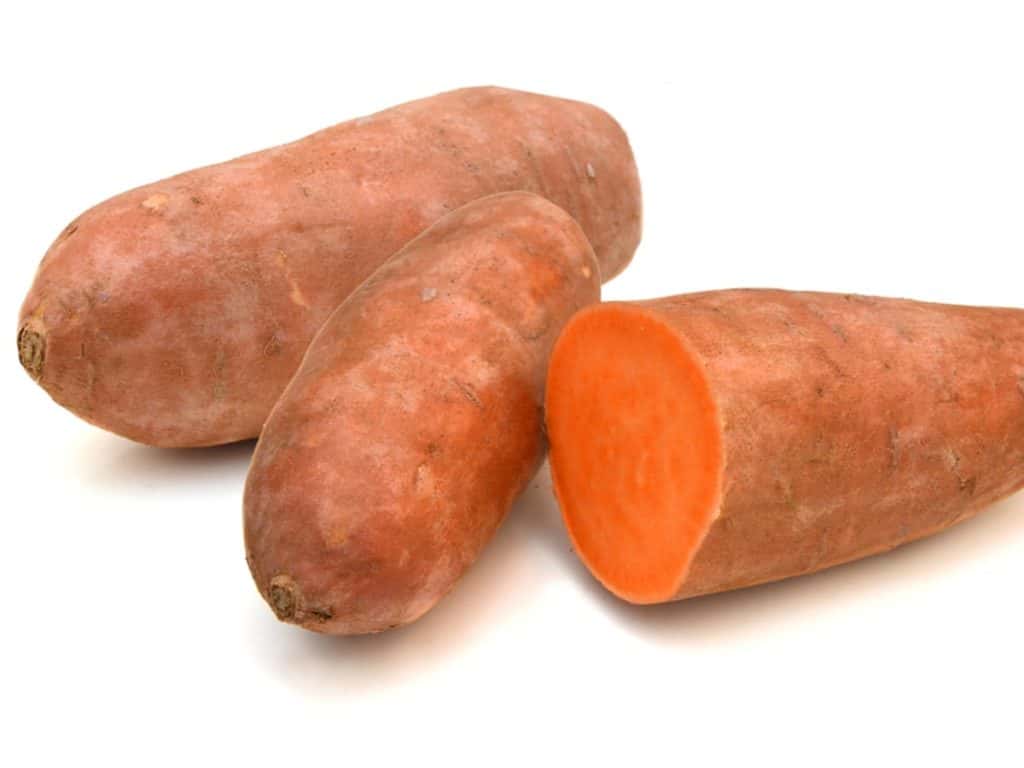
Why Sweet Potatoes Turn Brown
Plant foods like sweet potatoes have antioxidants called phenolic compounds or phenolics. The cells of these plants store these phenolics. The thing is, the cells also have an enzyme called polyphenol oxidase (PPO). PPOs break down phenolics.
Over time, as the plant ages, the cells die. When the cells die, those cell compartments break apart. The PPOs can then reach and break down the phenolics.
Scientists still don’t completely know the biological reason plants have PPOs. There is evidence that plants use PPOs to fight against plant pathogens.
But scientists do know that when PPOs break down phenolics, they make brown products. Hence, PPOs are a reason why foods like bananas, apples, and sweet potatoes turn brown.
If the plant is damaged, the compartments that separate PPOs and the phenolics can also break. Blunt forces on fragile fruits like the banana can be enough to damage the cells. The cells release the PPOs and phenolics.
And the part on which the fruit or vegetable got hit turns brown. Slicing or cutting the fruit or vegetable has the same effect. That is why sliced sweet potatoes turn brown. If the browning is intense, it can appear dark.
Can You Eat Sweet Potatoes That Got Brown?
Browning or darkening caused by only PPOs doesn’t make the sweet potatoes unsafe to eat. If the browning happened within an hour or two, there wouldn’t even be any changes in taste. If a few hours have passed since the browning started, then the taste might change. It is similar to when bananas or apples turn brown.
Despite the change in color and taste, sweet potatoes are still safe to eat. They may have fewer antioxidants, though. However, if the browning was due to mold and bacteria, then it is best you discard the affected sweet potatoes.
At the very least, you slice off the parts that are infected. Sweet potatoes are thick and tough vegetables. Bacteria and mold can’t easily penetrate the insides. So it’s safe to slice off the bad parts and keep the good ones, unlike with bread.
But if you see that bacteria or mold completely penetrating a sweet potato, then it’s better to discard all of it.
You can easily tell if the change in color is due to bacteria or mold. The area would be moist and mushy. There would also be an unpleasant smell.
How to Keep Sweet Potatoes Fresh
What you’ll read below will apply to all sweet potatoes, white, orange, purple, etc.
Keeping Raw Sweet Potatoes
The sweet potato is a tuber, so it grows underground. This trait makes it hardy and tough. It also means they like being stored in places that resemble their natural habitat. So cool and dark places are ideal.
Sweet potatoes that are still connected to their plant don’t mind getting wet. However, once you take the tubers, it is best to keep them dry. Two things can happen if sweet potatoes are always wet.
What Can Happen To Wet Sweet Potatoes
One thing that can happen is the tubers start growing roots. Eventually, they’ll grow shoots and leaves. Don’t worry when this happens because the tubers are still safe to eat. The roots that grow are like hair.
You can cut the roots off. You can also let the roots be since they wither out or fall off when you cook the tubers. Meanwhile, the shoots and leaves are edible, like spinach. If enough shoots grow, you can opt just to plant the tuber.
The other thing that can happen is mold and bacteria start growing. These microorganisms will flourish if the tubers are damaged. The tubers are like the storage houses of the sweet potato plant. They are full of carbohydrates and other nutrients.
If the tubers are damaged, and the insides are exposed, then they’re an open feast for microorganisms. You can easily tell if a tuber has been infected by mold or bacteria. The part that is infected gets discolored. It also gets mushy. There is also an unpleasant smell.
As long as you know you can keep them dry, you can bunch sweet potatoes together. But if you think they might collect moisture, then it’s best to also keep them well-ventilated. When stored properly, you can keep sweet potatoes for 3 to 5 months, maybe even more if they’re of great quality.
Keeping Sliced Sweet Potatoes
If you have already sliced your sweet potatoes, you can still keep them fresh for about 24 hours, maybe even longer. Remember that slicing damages the plant cells. As a result, the PPOs in the cells can break down the phenolics.
The end result is browning on the exposed surfaces. However, there are ways to slow down PPOs from breaking down the phenolics.
The steps below can help slow down the browning of your sliced sweet potatoes. The steps also work if the sweet potatoes are only peeled. Peeled sweet potatoes may even last longer.
Submerge Sliced Sweet Potatoes
The thing about PPOs and many enzymes is that they need oxygen to work. So if you want to stop or delay your sliced sweet potatoes from getting brown, you deprive them of oxygen. An easy way to do that is to submerge them in water. If you add salt to the water, then it will be more effective, but doing this will make the sweet potatoes salty.
Refrigerate Sliced Sweet Potatoes
How enzymes work depends on the temperature. The colder it is, the slower they work. So to delay your sliced sweet potatoes from getting brown, refrigerate them.
Lower The pH Of Sliced Sweet Potatoes
The function of enzymes also depends on the pH. Different enzymes thrive on different ranges of pH. In the case of PPOs, they don’t like low or acidic pH. So to slow down the browning of your sliced sweet potatoes, sprinkle them with acid.
You can use vinegar or the juice of lime or lemon. You can also submerge the sliced sweet potatoes in a diluted solution of the acid. Add salt to it too. Keep in mind, though, that adding acid will make the sweet potatoes sour.
Freezing Sweet Potatoes
You can freeze sweet potatoes to make them last for months, sometimes up to 12 months. However, it’s not advisable to freeze raw sweet potatoes. Sweet potatoes have high water content. If you freeze them raw, the water inside the sweet potatoes will turn into ice.
The ice crystals will pierce through the internal structures of the sweet potatoes. When you thaw them, they will be mushy and hard to cook. While frozen, they will also slowly brown. If you keep them frozen for a few days, the browning won’t be too obvious. But if you keep them frozen for months, then the browning would be clear.
If you intend to freeze your sweet potatoes, they need to be cooked or at least blanched. Blanching is a process that is done on fruits and vegetables.
The food is partially cooked in boiling water or steam for a short time. It is then quickly followed by rapid cooling. The high temperature of blanching stops the enzymes present in the food. The main targets are the enzymes that can lower the quality, like PPOs.
Once the food is taken out of the heat, it is rapidly cooled to stop it from cooking further. So the food is heated to stop enzymes, but it isn’t heated long enough to fully cook it.
Blanching Sweet Potatoes
Below is how you can blanch sweet potatoes using boiling water. You need the following:
- Ice cold water
- Pot of boiling water
- Large strainer or colander
- Knife
- Chopping Board
Prepare The Water
The first thing to do is bring water to a rolling boil. Boil them in a pot that can fit a good amount of sweet potatoes.
Prepare a separate bowl, pot, basin, or whatever large container. This water is where you will rapidly cool the sweet potatoes.
Chop
While you’re waiting for the water to boil, begin chopping your sweet potatoes. Peeling is optional. Chopping them into smaller pieces raises the surface area and lowers the volume per piece.
The result is faster blanching because the heat can reach the center of each piece faster. If you put a whole sweet potato into the pot, it will take time before the heat penetrates the insides. By the time the insides are heated, the surface and upper layers may already be fully cooked.
If you wish, you can chop the sweet potatoes into large pieces. That way, after you thaw them, you can chop them however smaller pieces you like.
After chopping, rinse the sweet potatoes of any dirt. To make it fast, put the chopped sweet potatoes on the strainer or colander. Have running water run through the sweet potatoes.
Heat
When your water is boiling, put in the sweet potatoes. The water temperature will drop for a bit. Bring the heat to high. After a minute or two, it should start boiling again. When it does, reduce the heat to a simmer. Let the sweet potatoes be submerged in hot water for 3 to 5 minutes.
When you reach the 3-minute mark, test one of the pieces. Poke it or bite into it (Cool it first, though). It should be softer than when it was raw, but it should still have some firmness.
You shouldn’t be able to easily squish the sweet potatoes. That in-between firmness indicates partial cooking, which is what blanching is.
If this is your first time blanching, then getting the right firmness will take practice. If the sweet potatoes still seem to be too firm, let them be in the heat for another 30 to 60 seconds before checking again.
If you’re unsure of what the right texture should be, err on the side of caution and cut the heating short.
Cool
When you are decided that the sweet potatoes have been heated enough, quickly strain them out. Immediately put them into the ice-cold water.
If you do several straining and cooling, the water will eventually get warm. Have some ice on standby when the water is nearing room temperature.
Dry and Freeze
When the sweet potatoes are cooled, strain them out of the water and let them dry. Once they are dry, transfer them to a container and put them in the freezer. You can also put the sweet potatoes on paper towels to absorb the water.
Make sure the sweet potatoes are as dry as possible or free of excess water before putting them in the freezer. Any excess water will turn into ice that can pierce the sweet potatoes. When that happens, the sweet potatoes will be mushier if you thaw them.
Freezing Cooked Sweet Potato
You can also freeze fully cooked sweet potatoes. This method applies to only certain dishes. Most dishes aren’t appealing when you thaw them.
Below are sweet potato dishes you can freeze:
- Roasted sweet potatoes
- Baked sweet potatoes
- Mashed sweet potatoes
- Soups
Take note that freezing whole dishes is better if the dishes have small or few ingredients. Imagine thawing a sweet potato dish with whole peppers or greens. When thawed, the sweet potato may look fine, but the peppers and greens will be dark and mushy. Now imagine thawing a sweet potato soup. It won’t look much different from its original appearance.
Freezing whole dishes with big or many ingredients is only okay with quick freezing. When food is quickly frozen, they don’t get as soggy or mushy when you thaw it. Unfortunately, quick freezing involves special equipment. The freezer in a regular home refrigerator freezes slowly.
White Spots On Sweet Potatoes
Those white spots are from liquid starch. They might leak out when you slice into the sweet potato. Those are normal and are nothing to be worried about.
Black Veins on Sweet Potato
Those “veins” are part of the root system of the sweet potato plant. Remember that the tuber grows underground because it is part of the plant’s root. The veiny areas are edible, but they may be tough, so cook those well.
Can You Store Sweet Potatoes With Regular Potatoes?
Raw sweet potatoes and regular raw potatoes have the same needs when it comes to storage. You can store them in the same place.
Sweet potatoes are a great root crop that is packed with fiber, minerals, and vitamins. You can also adapt them to many recipes. They deserve a slot in your pantry. After reading this, you shouldn’t be worried about how to store them.

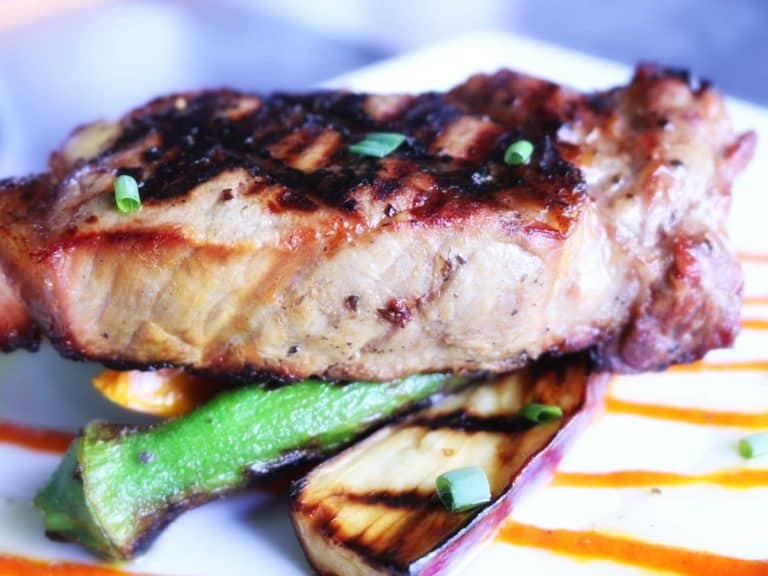
![How to Broil Without a Broiler [Creative Methods]](https://foodwine.com/wp-content/uploads/2021/12/broil-chicken-j1216-768x576.jpg)
